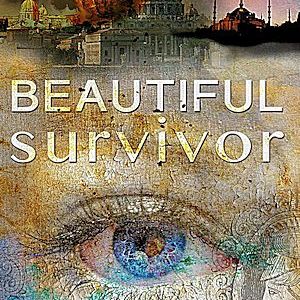Readers often comment on the vividness of my settings, which in Warp in the Weave happens to be Turkey.
“Ms. Thornley’s descriptions of Turkey are so vivid, I could almost picture myself walking alongside Phoebe in the bustling streets and breathing in the air of the ancient caves”
and “She sucks you right into the world she creates with her vivid descriptions! I could see the colors and hear the chatter in the Turkish bazaars.” These are only two comments plucked from reviews but all reference setting as one of their favorite aspects.
I can’t help myself. Apparently this descriptive bent began in elementary school, since my teachers remarked on it from my earliest years (probably while I was failing math). Descriptions are like sprinkling a powerful flavor pack over a too-small world and watching it expand to magnificent proportions.
So I invite all five senses to the party. Most of my books are set in an evocative location–Bermuda, New Orleans, London, Turkey. Travel being, among other things, a sensory experience, I try to bring my readers with me on a ride much as I do on my escorted textile tours. By shrinking the distance between armchair and reality, readers plunge into the immediacy of place and time so that wherever the story takes them, they stay with me.
Warp in the Weave’s action launches in London but jettisons to Turkey, beginning with Istanbul. For avid textile shoppers everywhere, here’s a taste:
Down a set of concrete stairs, past a busy outdoor cafe, through a throng of tourists threaded by young men delivering trays of tea, I arrived at last at the Arasta Bazaar. An outdoor pedestrian arcade lined with modern shops tucked into old gray stone walls, it displayed all that had made Turkey a trade crossroads for centuries–textiles, tiles, gold, silver, jewelry.
My steps faltered. I was seeking Erdogan Sevgi Carpets, which I had yet to find, but to walk past the Isnik tile shops, the store selling silken robes and vests, the jewelry shop glittering with lapis and high-karat gold, the shop specializing in embroidered pillows, and, of course, all the other carpet stores, was nearly impossible.
Everything I loved and honored resided here, and the merchants knew how to display their offerings, how to jumble patterns and colors together so that each excited the other in a harmonious symphony. My eyes couldn’t bear to pass them by without proper acknowledgment.
“Miss, I have more inside.”
I looked up from where I stood transfixed before a window displaying a magnificent Ottoman-style carpet, not old but expertly crafted in brilliant hues and intricate patterns, probably at least 25 knots per inch. A young man wearing the Turkish street uniform of jeans and leather stood in the doorway smiling.
“Um, I’m only looking, thank you, but this is a gorgeous piece.”
Before I knew, I was sitting in the shop, sipping the small glass cup of tea Erkan offered, appreciating the show as he rolled out carpet after carpet until the floor at my feet was an overlay of wool and weaves. Most were new, the products of either small households or the many carpet cooperatives that operated across Turkey. Though handmade, they were still commercial productions and not what interested me as a collector or dealer, though beautiful nonetheless. A few emerged that were clearly older, less regular, with discolorations in the hand-dyed wool. They were pleasing but not spectacular. I insisted to Erkan that I was only looking, which he ignored while proceeding to show me even more.
Pictured a photo of two of my fiber clients in the Grand Bazaar in Istanbul, October 2011




